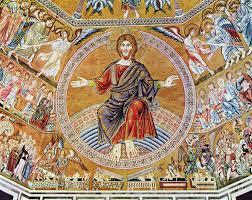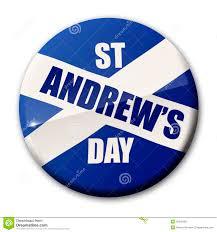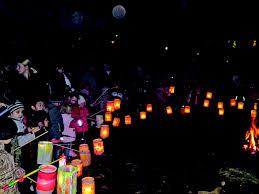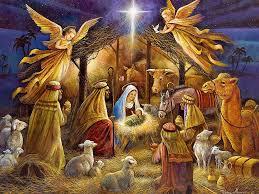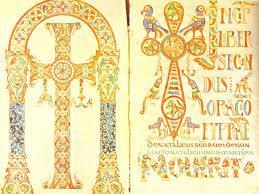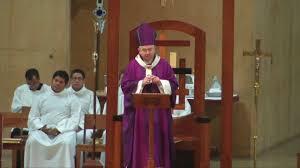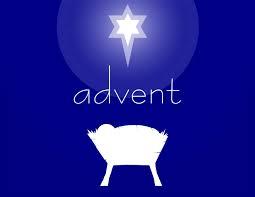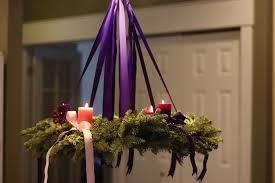What Do You Know About The Advent?

Advent is a religious season that is commemorated in many Christian Churches in the West as a time of expectant waiting and preparation for Nativity of Jesus. The celebration details the coming of Jesus Christ from three different perspectives.
- 1.
What does advent mean in its Latin version?
- A.
Coming
- B.
Rebirth
- C.
Epiphany
- D.
Resurrection
Correct Answer
A. ComingExplanation
In its Latin version, advent means "coming". This refers to the arrival or coming of someone or something, particularly in the context of the Christian liturgical season of Advent, which anticipates the coming of Jesus Christ. The word "advent" is derived from the Latin word "adventus", which means "arrival" or "approach". It signifies the expectation and preparation for the arrival of something significant or the beginning of a new era.Rate this question:
-
- 2.
What Greek word translates into advent?
- A.
Eusebia
- B.
Parousia
- C.
Philos
- D.
Haghios
Correct Answer
B. ParousiaExplanation
Parousia is the correct answer because it is the Greek word that translates into advent. In Christian theology, Parousia refers to the second coming of Christ, which is often associated with the Advent season in the Christian calendar. The word signifies the anticipation and arrival of something or someone important, which aligns with the meaning of advent.Rate this question:
-
- 3.
What does the advent signify?
- A.
The Birth of Christ
- B.
The Death of Christ
- C.
Second coming of Christ
- D.
The Day of Pentecost
Correct Answer
C. Second coming of ChristExplanation
The advent signifies the second coming of Christ. This refers to the belief in Christianity that Jesus Christ will return to Earth in the future, after his initial birth and death, to judge the living and the dead. It is seen as a significant event that will mark the end of the world and the beginning of Christ's eternal reign.Rate this question:
-
- 4.
Advent is the nearest Sunday to which day?
- A.
St. Nicolas Day
- B.
St. Paul Day
- C.
St. Aquinas Day
- D.
St. Andrew's Day
Correct Answer
D. St. Andrew's DayExplanation
Advent is the nearest Sunday to St. Andrew's Day. Advent is a Christian tradition that marks the beginning of the liturgical year and the preparation for the arrival of Jesus Christ. It starts on the fourth Sunday before Christmas, which is the closest Sunday to St. Andrew's Day, celebrated on November 30th. Therefore, St. Andrew's Day determines the timing of the start of Advent.Rate this question:
-
- 5.
In the Ambrosian Rite, advent follows which day?
- A.
St. Martin's Day
- B.
St. Theresa's Day
- C.
St. Peter's Day
- D.
St. Francis' Day
Correct Answer
A. St. Martin's DayExplanation
In the Ambrosian Rite, advent follows St. Martin's Day. The Ambrosian Rite is a liturgical tradition used in the Archdiocese of Milan, Italy. St. Martin's Day, also known as the Feast of St. Martin, is celebrated on November 11th. It marks the beginning of the Advent season in the Ambrosian Rite, which is a period of preparation and anticipation leading up to Christmas. This tradition is specific to the Ambrosian Rite and may differ from other liturgical calendars.Rate this question:
-
- 6.
What is the equivalent of advent in Eastern Christianity?
- A.
Easter
- B.
Nativity Fast
- C.
Christmas
- D.
Passover
Correct Answer
B. Nativity FastExplanation
The equivalent of advent in Eastern Christianity is the Nativity Fast. This is a period of fasting and preparation leading up to the celebration of the birth of Jesus Christ. It is observed for 40 days, starting on November 15th and ending on December 24th. During this time, Eastern Christians abstain from certain foods and engage in prayer and reflection to spiritually prepare for the Christmas season.Rate this question:
-
- 7.
Where in the western churches is there the first clear reference to advent?
- A.
Codex
- B.
Sefer Torah
- C.
Gelasian Sacramentary
- D.
Exultet Scroll
Correct Answer
C. Gelasian SacramentaryExplanation
The Gelasian Sacramentary is the earliest known liturgical book of the Roman Catholic Church and contains the first clear reference to Advent. It was compiled in the 8th century and includes prayers and rituals for various liturgical seasons, including Advent. This reference marks the beginning of the formal recognition and celebration of Advent in the Western churches. The Codex, Sefer Torah, and Exultet Scroll are not directly related to Advent and do not provide the first clear reference to it.Rate this question:
-
- 8.
What is the usual liturgical color in Western Christianity for Advent?
- A.
Blue
- B.
Red
- C.
White
- D.
Purple
Correct Answer
D. PurpleExplanation
Purple is the usual liturgical color in Western Christianity for Advent. This color symbolizes penance, preparation, and anticipation. Advent is a time of reflection and repentance, as Christians prepare for the coming of Christ. Purple is often associated with royalty and is used to represent the majesty and sovereignty of Jesus. It is also a color of mourning, highlighting the seriousness of the season and the need for spiritual introspection. Overall, purple is the traditional color chosen to set the tone for Advent and to remind believers of the significance of this time of preparation.Rate this question:
-
- 9.
What color does the Lutheran Book of Worship list as the preferred color for Advent?
- A.
Blue
- B.
Red
- C.
White
- D.
Green
Correct Answer
A. BlueExplanation
The Lutheran Book of Worship lists blue as the preferred color for Advent. This is because blue symbolizes hope and expectation, which are central themes of the Advent season. Blue is also associated with the Virgin Mary, who plays a significant role in the Christmas story. Using blue as the liturgical color during Advent helps to create a sense of anticipation and preparation for the coming of Christ.Rate this question:
-
- 10.
What do you czll the 3rd Sunday of Advent?
- A.
Easter Sunday
- B.
Pentecost Sunday
- C.
Gaudete Sunday
- D.
Covenant Sunday
Correct Answer
C. Gaudete SundayExplanation
Gaudete Sunday is the correct answer because it refers to the 3rd Sunday of Advent. The term "Gaudete" comes from the Latin word for "rejoice" and it signifies a shift in the liturgical season towards a more joyful anticipation of Christmas. On this day, the color of the liturgical vestments changes to rose, symbolizing the joy and hope of the imminent arrival of Christ. It is a time to celebrate and rejoice in the coming of our Savior.Rate this question:
-
Quiz Review Timeline +
Our quizzes are rigorously reviewed, monitored and continuously updated by our expert board to maintain accuracy, relevance, and timeliness.
-
Current Version
-
Mar 01, 2023Quiz Edited by
ProProfs Editorial Team -
Feb 05, 2017Quiz Created by
Bkwasi





